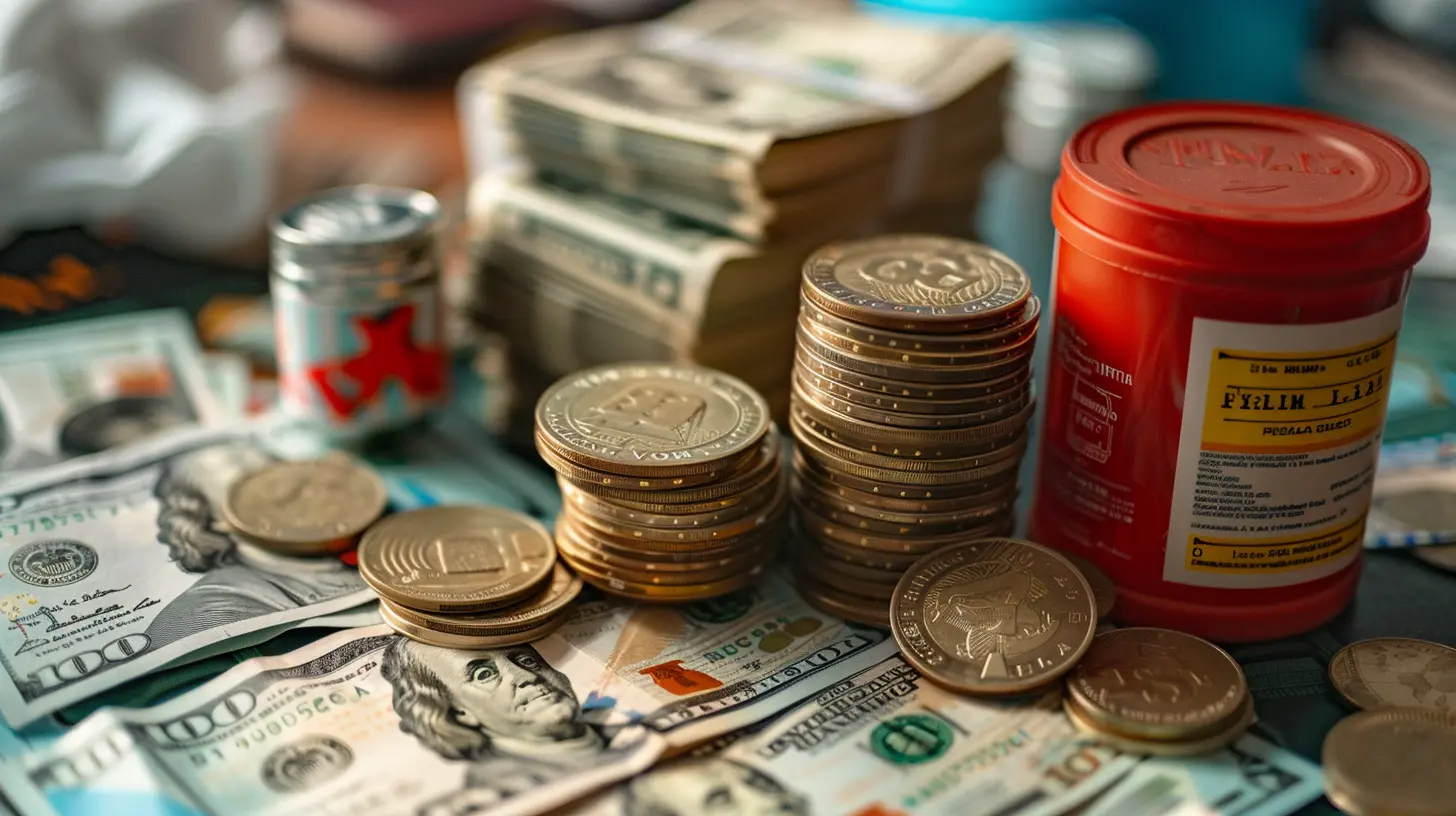Essential Tips to Protect Your Emergency Fund from Inflation
23 August 2025
Let’s talk about something we all know we need—but often don’t give enough thought to: the emergency fund. Think of it as your financial safety net, your peace-of-mind stash for those “just-in-case” moments—job loss, medical expenses, car breakdowns, or unexpected home repairs.
Now, here’s the kicker: your emergency fund might actually be losing value while it’s sitting quietly in your bank account. Sounds crazy, right?
Well, inflation is the sneaky culprit here. It erodes the purchasing power of your money over time. So, unless your emergency fund is safeguarded properly, it might not be enough when you really need it. But don’t worry—I’ve got your back.
In this article, we’ll dive into essential (and very doable) tips to protect your emergency fund from inflation, without putting it at risk.
What Is Inflation, and Why Should You Care?
Before we jump into strategies, let’s clear up what inflation actually is.Inflation is the general increase in prices over time. It means that what costs $100 today might cost $110 or more a year from now. You’ve probably already noticed it at the grocery store or gas pump.
Now, imagine if your emergency fund has been sitting in a regular savings account earning just 0.01% interest. Meanwhile, inflation is running at 3% or more. Essentially, your money’s buying power is shrinking every single day. Ouch.
So how do we fight back? Let’s break it down.
1. Don’t Keep Your Emergency Fund in Cash Under a Mattress
Unless you're starring in a 1940s movie, keeping cash stashed in an envelope under your bed is not only unsafe, it's financially unwise. Why?Because cash earns nothing. Zero. Nada. And if inflation is 3%, you’re losing 3% of its value every year by doing, well, nothing.
Instead of hoarding bills like a squirrel with acorns, you want your money to work for you, even just a little.
2. Use High-Yield Savings Accounts
One of the easiest ways to combat inflation (without taking on much risk) is to park your emergency fund in a high-yield savings account (HYSA).These accounts offer interest rates that are significantly higher than traditional savings accounts—sometimes by 10x or more. While they still might not beat inflation completely, they definitely take some of the sting out.
💡 Example: Instead of earning $1 a year on $10,000 in a regular account, a HYSA earning 3.5% interest would give you $350. That’s a big difference, right?
Look for online banks or credit unions that offer competitive rates, no monthly fees, and easy access to your funds.
3. Consider a Money Market Account (MMA)
Money market accounts are another solid option. Think of them as the middle ground between savings and checking accounts. They often offer slightly higher interest rates than HYSAs and might even come with check-writing privileges or debit cards.The catch? They usually have a higher minimum balance requirement. But if your emergency fund is relatively large, that shouldn’t be a problem.
Just make sure the account is FDIC-insured so your money is protected.
4. Split Your Emergency Fund Into Tiers
Here’s a fun little strategy: divide your emergency fund into two (or three) tiers depending on how quickly you might need access to it.Tier 1: Immediate Cash (Quick Access)
Keep 30–50% in a high-yield savings account for immediate emergencies—the kind that can’t wait, like a burst pipe or a stolen laptop.Tier 2: Short-Term Investments (Still Accessible)
Put the rest in a slightly higher-yield, low-risk option like a money market mutual fund or short-term Certificate of Deposit (CD). These typically offer better protection against inflation but might take a few days to access.Tier 3: Inflation Hedges (Optional)
If you’re feeling a little more confident, allocate a small portion (say 10%) in I Bonds or Treasury Inflation-Protected Securities (TIPS)—more on these later.This tiered approach gives you the benefits of liquidity and growth. It’s like having both a raincoat and an umbrella, just in case.
5. Don’t Lock It All Up in CDs or Long-Term Investments
Now, some people make the mistake of moving all their emergency funds into long-term investments like 5-year CDs or stock market accounts.Big no-no. Why? Because emergencies don’t care about your investment timeline.
You might get higher returns, sure—but you’ll also face penalties or losses if you need the money sooner. Remember: it’s not just about beating inflation; it’s about accessibility.
So, keep your powder dry. Liquidity matters.
6. Keep an Eye on I Bonds
If you want a safe, inflation-beating option, I Bonds are seriously worth considering.Issued by the U.S. Treasury, these bad boys offer interest rates that adjust with inflation. That means when inflation rises, so do your returns. Crazy, right?
The only downsides? You can only buy up to $10,000 per person per year, and you must hold them for at least one year before you can cash them in. But if your emergency fund is large or you’re building it over time, I Bonds are a solid addition to your strategy.
7. TIPS Can Be Your Friend
TIPS—short for Treasury Inflation-Protected Securities—are another inflation-fighting tool issued by Uncle Sam.They work by adjusting both your principal and interest payments to keep up with inflation. So, they’re safe, government-backed, and inflation-resistant.
Again, not ideal for the portion of your emergency fund you might need tomorrow, but great for that longer-term portion in Tier 2 or 3.
8. Watch Out for Fees and Penalties
Whatever route you take, make sure you're not losing your gains to unnecessary fees.Monthly service fees, withdrawal penalties, or complicated terms can eat away at your interest faster than inflation does. Read the fine print and make sure you always have free and easy access to your emergency money.
Trust me, the last thing you want during an emergency is to be stuck on hold with customer service trying to access your own cash.
9. Automate and Revisit Annually
Inflation changes. Interest rates change. Your life changes.So should your emergency fund.
Set a calendar reminder to review your emergency savings strategy at least once a year. Check to see if your accounts are still offering competitive rates. Rebalance your tiers if your financial situation has changed. And hey—if you got a raise, maybe bump up that fund a bit too.
Also, consider automating a small monthly transfer into your emergency fund. It builds up quietly without you feeling the pinch—and that’s smart money management.
10. Don’t Rely Only on Your Savings—Reduce Emergency Risks Too
Here’s an underrated strategy: lower the chances of needing your emergency fund in the first place.How? By being proactive:
- Keep up with car maintenance.
- Have good health and renters/homeowners insurance.
- Maintain an emergency budget that you can activate if things get tight.
Reducing the likelihood of an emergency frees up your fund to grow without being drained unnecessarily.
Final Thoughts: Inflation Doesn’t Have to Win
Look, inflation isn’t going anywhere. It’s like that one guest at the party who showed up uninvited and won’t leave. But that doesn’t mean you’re powerless.By being smart, strategic, and just a little curious, you can make sure your emergency fund is ready when the unexpected knocks on your door.
You’re not just saving money—you’re protecting your future self from extra stress. And honestly, what better gift can you give than peace of mind?
Stay ready. Stay smart. Your future self will thank you.
all images in this post were generated using AI tools
Category:
Emergency FundAuthor:

Knight Barrett
Discussion
rate this article
1 comments
Sari Wagner
This article offers valuable insights into safeguarding an emergency fund against inflation. It’s a crucial reminder that proactive financial planning can prevent erosion of savings over time.
September 5, 2025 at 2:26 AM

Knight Barrett
Thank you for your feedback! I'm glad you found the insights helpful for proactive financial planning.


